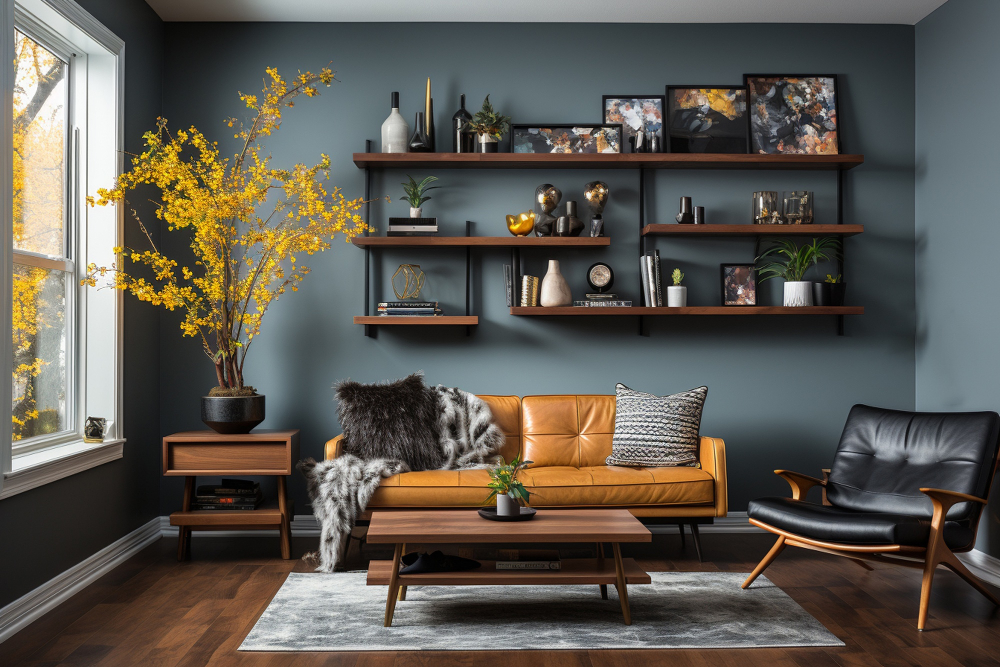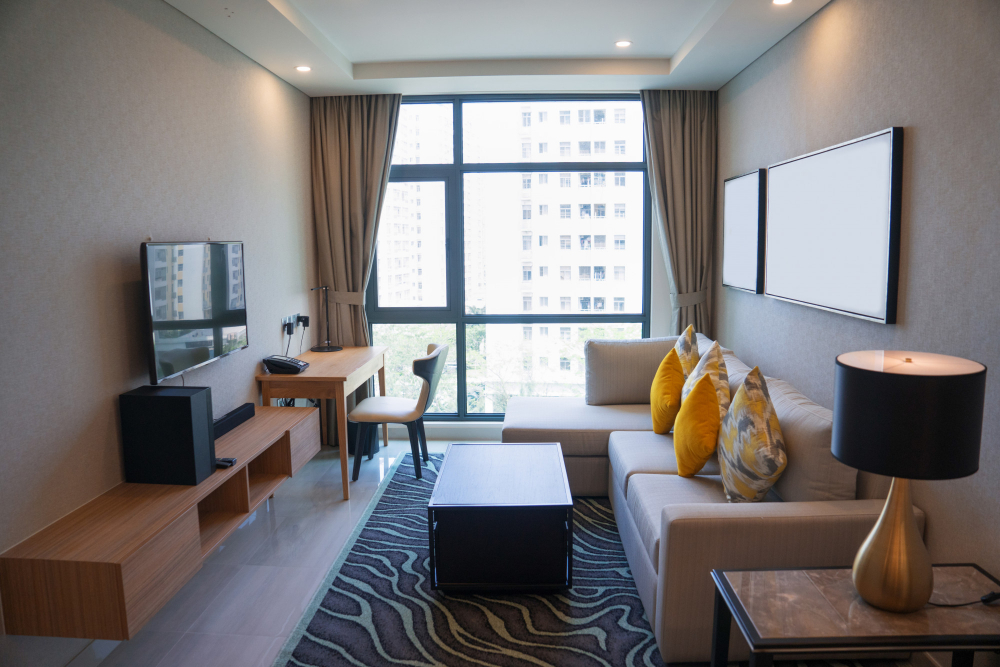Arranging furniture in a small bedroom can be a challenge, but with the right design tips and clever tricks, you can transform a cramped space into a cozy, functional retreat. At mistyinfo.com, we understand that maximizing limited space is essential for comfort and style. In this article, we’ll explore practical and creative room arrangement ideas to make the most of your small bedroom without compromising on aesthetics or usability. Whether you’re working with a tight floor plan or just want a more organized, clutter-free space, these solutions will help you create a bedroom that feels spacious and inviting.
Room Arrangement Ideas for Small Bedrooms by Mistyinfo.com
1. Use Multi-Functional Furniture
One of the best ways to optimize space in a small bedroom is to invest in multi-functional furniture. When pieces serve more than one purpose, you free up floor space for other essentials.
- Bed with Storage: Consider a bed with built-in storage drawers underneath. This eliminates the need for bulky dressers or extra storage units, freeing up valuable space. You can store seasonal clothing, bedding, or other items without cluttering the room.
- Foldable Desk or Wall-Mounted Vanity: If you need a workspace or vanity area in your bedroom, choose foldable or wall-mounted designs. These can be easily tucked away when not in use, leaving more room for walking space.
- Ottoman with Storage: A storage ottoman at the foot of the bed or next to a chair can double as seating and a place to store blankets, books, or other small items.
2. Optimize Vertical Space
In small bedrooms, floor space is limited, so you must think vertically. Take advantage of the walls and higher areas to create storage and keep the room organized.
- Tall Bookshelves or Storage Units: A tall bookshelf or storage unit can provide ample space for books, décor, and personal items without taking up much floor space. Position it near the bed or in a corner to maximize space.
- Wall-Mounted Shelving: Install floating shelves on the walls to display decorative pieces, books, or essentials. These shelves help declutter surfaces like nightstands and dressers while adding a personal touch to the room.
- Hanging Hooks or Pegboards: Hooks and pegboards on the walls can be used to hang bags, hats, scarves, and even jewelry. This keeps these items organized and off the floor, making the room appear less crowded.
3. Choose the Right Bed Placement
Bed placement is one of the most important aspects of room arrangement in a small bedroom. The wrong bed position can make a room feel cramped, while the right placement can create an open, inviting layout.
- Against the Wall: For a room-saving solution, place the bed against one wall or in a corner. This arrangement creates more open floor space, allowing you to incorporate other pieces of furniture like a desk or dresser without making the room feel cramped.
- Centered with Space on Both Sides: If you have just enough space, centering the bed against one wall with room for nightstands on either side can create a balanced look. Opt for slim or minimalist nightstands to avoid clutter.
- Under a Window: If your room has a window, placing the bed under it can work well, especially if the room is narrow. This frees up wall space for shelves or other furniture and allows for natural light to brighten the room.
4. Choose Light Colors and Mirrors
Color plays a big role in how spacious a room feels. Light, neutral tones help reflect light, making a small room appear larger and more open. Mirrors can enhance the sense of space by reflecting light and providing a view of the surroundings.
- Light Wall Colors: Opt for soft whites, creams, pastels, or light grays to open up the room. These shades make the space feel airier and less confined.
- Mirrors: Place a large mirror on one wall or use mirrored closet doors. This will visually expand the space by reflecting the room’s light and surroundings.
- Light-Colored Bedding and Furniture: Stick with lighter shades for your bedding and furniture to keep the room looking fresh and bright. Avoid dark, heavy furniture that can make the room feel smaller and more crowded.
5. Maximize Closet Space
Small bedrooms often come with small closets, but you can maximize closet space with clever organizing techniques to store more and keep things neat.
- Closet Organizers: Invest in closet organizers like hanging shelves, baskets, and rods to create more storage for clothes, shoes, and accessories. Double the hanging space with two rods — one higher up and one lower — to hang more items.
- Sliding Closet Doors: If possible, switch to sliding closet doors instead of hinged ones. Hinged doors require extra space to open, while sliding doors save space and give the room a sleek, modern look.
- Use the Back of the Closet Door: Install hooks or a hanging organizer on the inside of your closet door to store shoes, belts, scarves, or bags. This maximizes vertical space and keeps everything within reach.
6. Keep the Layout Simple
In small bedrooms, less is often more. Avoid overfilling the room with furniture or décor that can make the space feel cramped. Stick to the essentials and choose a simple, streamlined layout.
- Minimal Furniture: Keep the number of furniture pieces to a minimum. A bed, nightstand, and dresser or storage solution are typically all you need in a small bedroom. Avoid large, bulky furniture that dominates the room.
- Clear Pathways: Ensure there’s a clear walking path from the door to the bed and between furniture pieces. This creates a more open, easy-to-navigate space and prevents the room from feeling cluttered.
- Declutter: Decluttering is key to making a small room feel larger. Avoid overdecorating and keep surfaces clear. Use storage baskets or decorative boxes to hide away items you don’t use daily.
7. Opt for Space-Saving Furniture Designs
Furniture specifically designed for small spaces can be a game-changer. These pieces are compact, yet functional, offering everything you need without taking up too much room.
- Slim Nightstands: Choose narrow nightstands or wall-mounted shelves as an alternative to traditional bulky ones. They’ll give you just enough space for essentials like a lamp, alarm clock, or book.
- Under-Bed Storage Solutions: If you don’t have a bed with built-in storage, you can still use the space under the bed for storage boxes or bins. This is a great way to store off-season clothing or extra bedding without taking up any floor space.
- Foldable or Stackable Chairs: If you need extra seating in the room, opt for foldable or stackable chairs. These can be stored away when not in use, leaving more space for moving around.
8. Add Personal Touches
Even in a small space, it’s important to add personal touches that reflect your style and personality. You can decorate without overwhelming the room by choosing a few meaningful items to display.
- Artwork: Hang a few pieces of artwork or photographs on the walls to give the room character. Stick to one or two larger pieces rather than many small ones to avoid a cluttered look.
- Textiles: Add warmth and coziness to your small bedroom with soft, textured textiles. Throw blankets, decorative pillows, and area rugs can make the space feel inviting while adding pops of color.
- Plants: Indoor plants bring life to any room and can make your small bedroom feel fresh and vibrant. Choose small or hanging plants to save on floor space.
Conclusion
Designing a small bedroom doesn’t mean you have to compromise on style or functionality. With these smart room arrangement ideas from mistyinfo.com, you can create a space that’s both practical and beautiful. Whether you focus on using multi-functional furniture, optimizing vertical space, or keeping the layout simple, these tips will help you make the most of your small bedroom.
Remember, thoughtful design choices and clever storage solutions can transform even the smallest of rooms into a comfortable and stylish haven. For more home décor tips and ideas, be sure to check out mistyinfo.com regularly for inspiration!


